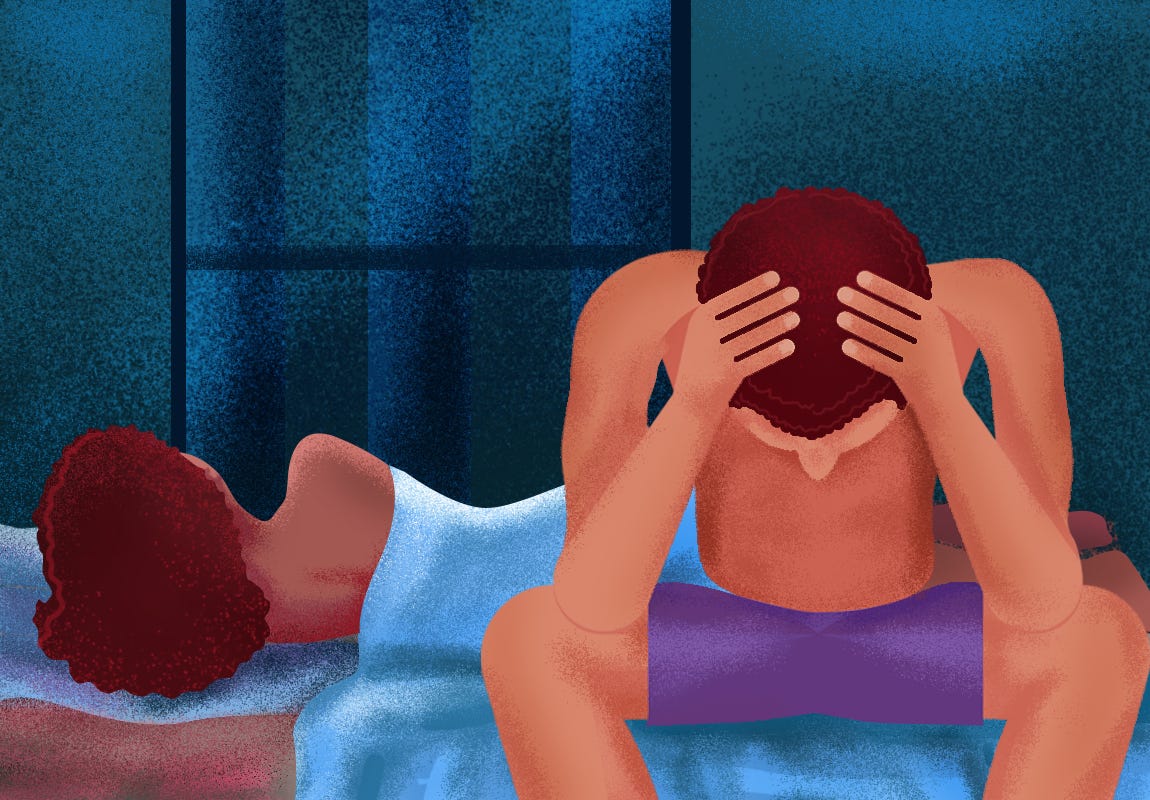Sexual dysfunction is a problem that can occur at any time, during the sexual response cycle of an individual. It prevents the person from getting pleasure from sexual activity.
Traditionally, the sexual response cycle includes excitement, plateau, orgasm, and resolution. Desire and arousal are both components of the sexual response's excitement phase. It is important to note that women don't always go through these stages in the same order.
What causes sexual dysfunction?
Lots of things can lead to sexual dysfunction, and for many people there’s more than one cause. Common causes for sexual dysfunction include things like stress, fear and anxiety about sex, alcohol, tobacco, and drug use, hormone levels, mental health issues (like depression) , sexual assault or trauma in your past, problems in your relationship, certain medicines and treatments, menopause, recent pregnancy, delivery, or breastfeeding, medical problems like cancer, diabetes, heart problems, multiple sclerosis, or bladder problems.
Symptoms of Sexual Dysfunction
While sexual dysfunctions are common in both men and women, intimacy challenges are experienced in ways that are unique to each sex.
In Men
An unexplainable lack of interest in sexual intercourse
Persistent difficulty in producing or maintaining an erection suitable for sex
The inability to reach orgasm, or a lengthened delay in climaxing
Constant difficulty with regulating moments when ejaculation occurs
In Women
A noticeable disinterest in sexual activity
Difficulty getting aroused
Experiencing pain during intercourse
Inadequate lubrication during sex
Difficulty relaxing vaginal muscles to permit penetration
Types of Sexual Dysfunction
While both men and women face difficulties as a result of sexual contact, these difficulties are typically classified as follows:
Sexual desire disorders
Arousal disorders
Orgasm challenges
Pain during intercourse
Sexual Desire Disorders
While it is perfectly normal for sex to take a back seat during weekly or even monthly activities, this lack of interest may qualify as a disorder if it lasts for an extended period of time and causes concern. Sexual desire disorders are defined as a lack of interest in sexual activity. In such cases, the individual usually has few to no sexual fantasies or thoughts. This lack of interest can lead to a lack of responsiveness in intimate situations.
Sexual desire disorders include the following:
Hypoactive Sexual Desire Disorder: A persistent lack of interest in sexual activities characterises this condition. It is the absence or reduction of sexual fantasies and thoughts. While men can suffer from this disorder, it is most common in women, with approximately 40% of women reporting a lack of interest in sex. This disorder causes significant distress and problems with sexual partners.
Sexual Aversion Disorder: In some people, the mere thought of engaging in sexual activities causes a physical recoil of disgust. Sexual aversion disorder is characterised by a persistent and, in some cases, extreme avoidance of all or most forms of genital contact with a partner. The avoidant nature associated with this condition can be distressing for those who live with it and can lead to some complications.
Arousal Disorders
Arousal dysfunctions are classified as follows:
Erectile dysfunction: This is an arousal disorder in which men have difficulty forming and maintaining erections suitable for sexual activity. However, the first sign of difficulty achieving or maintaining an erection does not always indicate erectile dysfunction (ED). However, if these difficulties persist for more than three months without being caused by external factors such as surgery or physical trauma, the symptoms may be indicative of an arousal disorder.
Vaginal dryness: Vaginal dryness is a condition that can affect women of all ages. Despite sexual excitement, the lack of proper lubrication can cause pain and difficulties in intimate moments.
Chronic genital arousal disorder: While continuous arousal is a welcome development in the bedroom, people suffering from this condition are subjected to unwanted stimulation at work, school, other public places, and even at home alone, with no warning or trigger. These impulsive and intrusive feelings, which may or may not result in orgasms, can be extremely distressing to those who live with them.
Orgasmic disorders
Some types of sexual dysfunction include orgasmic difficulties such as the following:
Premature ejaculation (PE): PE is observed in men and occurs when ejaculation occurs earlier than desired. This can happen before or after penetration. A person suffering from this condition usually has no control over when they ejaculate.
Delayed ejaculation: It can be distressing not only to the person directly affected, but also to their sexual partners. Delayed ejaculation is the term used to describe an unusually long wait time for orgasm during intercourse.
Orgasmic dysfunction: Disruptions in the orgasmic experience. It could be the absence of orgasm after sexual activity, a reduction in orgasm intensity despite adequate stimulation, or a noticeable delay in reaching orgasm.
Anejaculation is defined as the absence of ejaculation during orgasm.
Intercourse Anxiety: Pain during sexual activity can also be associated with sexual dysfunction:
Dyspareunia: People who have this condition have continuous pain during sex or when attempting to initiate penis-vaginal intercourse.
Vaginismus: All forms of vaginal entry, whether penile or through the fingers, and sexual objects are problematic here. This happens despite a genuine desire to have sex.
Treatment
Most types of sexual dysfunction are treatable by addressing underlying physical or psychological issues. The success of sexual dysfunction treatment is determined by the underlying cause of the problem. Other treatment options include medication, mechanical aids, sex therapy, behavioural treatments, psychotherapy, education and communication.
Now put on your thinking hats and think about the following questions for a couple of minutes.
Can you think of some factors that may contribute to sexual dysfunction?
Can you think of ways to treat a person who is suffering from sexual dysfunction?
Write down your thoughts and discuss them with your students, children and your colleagues. Listen to their views and compare them with your own. As you listen to others, note how similar or different your views are to others’.
Thank you for listening. Subscribe to The Scando Review on thescandoreview.com.
Happy Teaching!













Sexual dysfunction